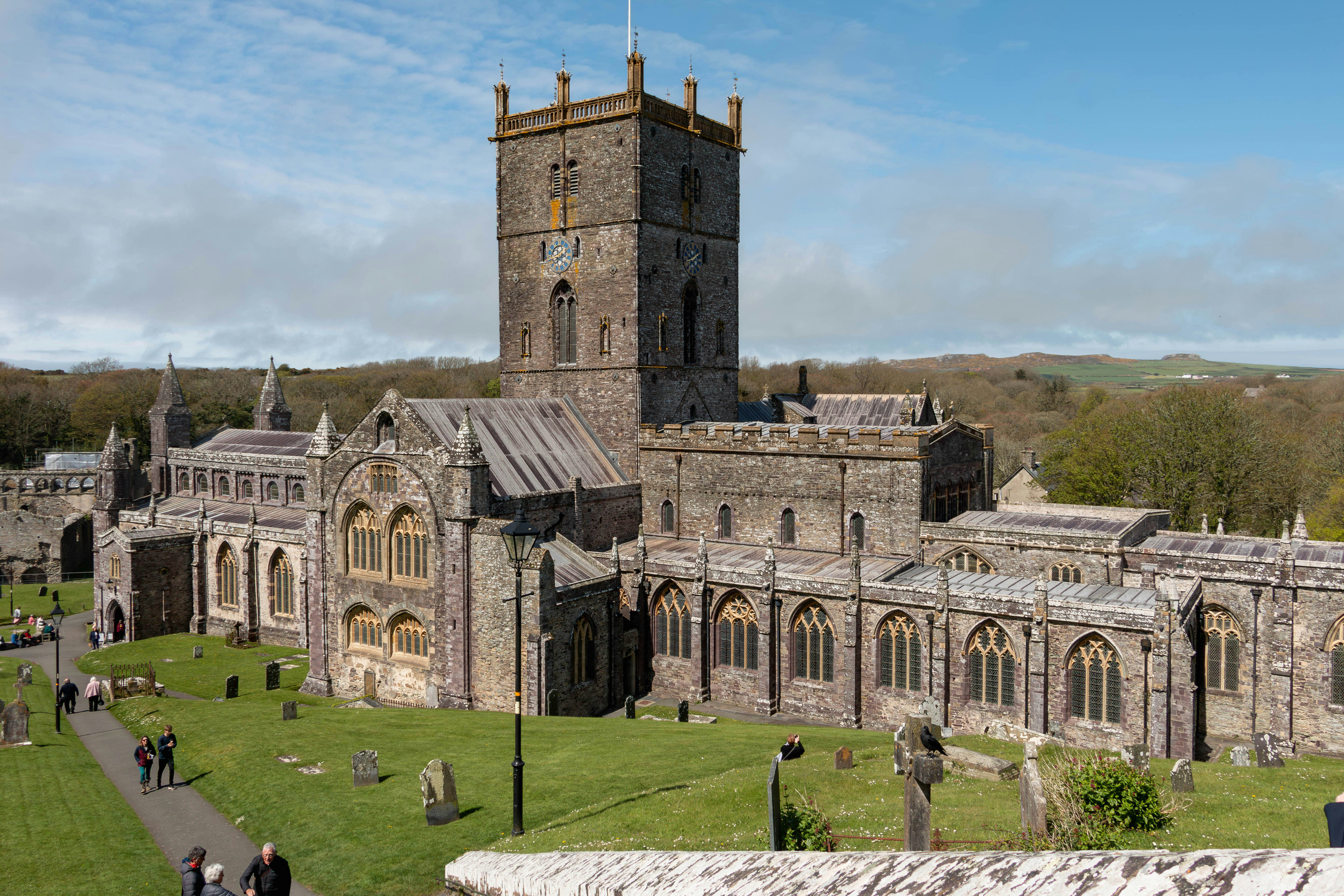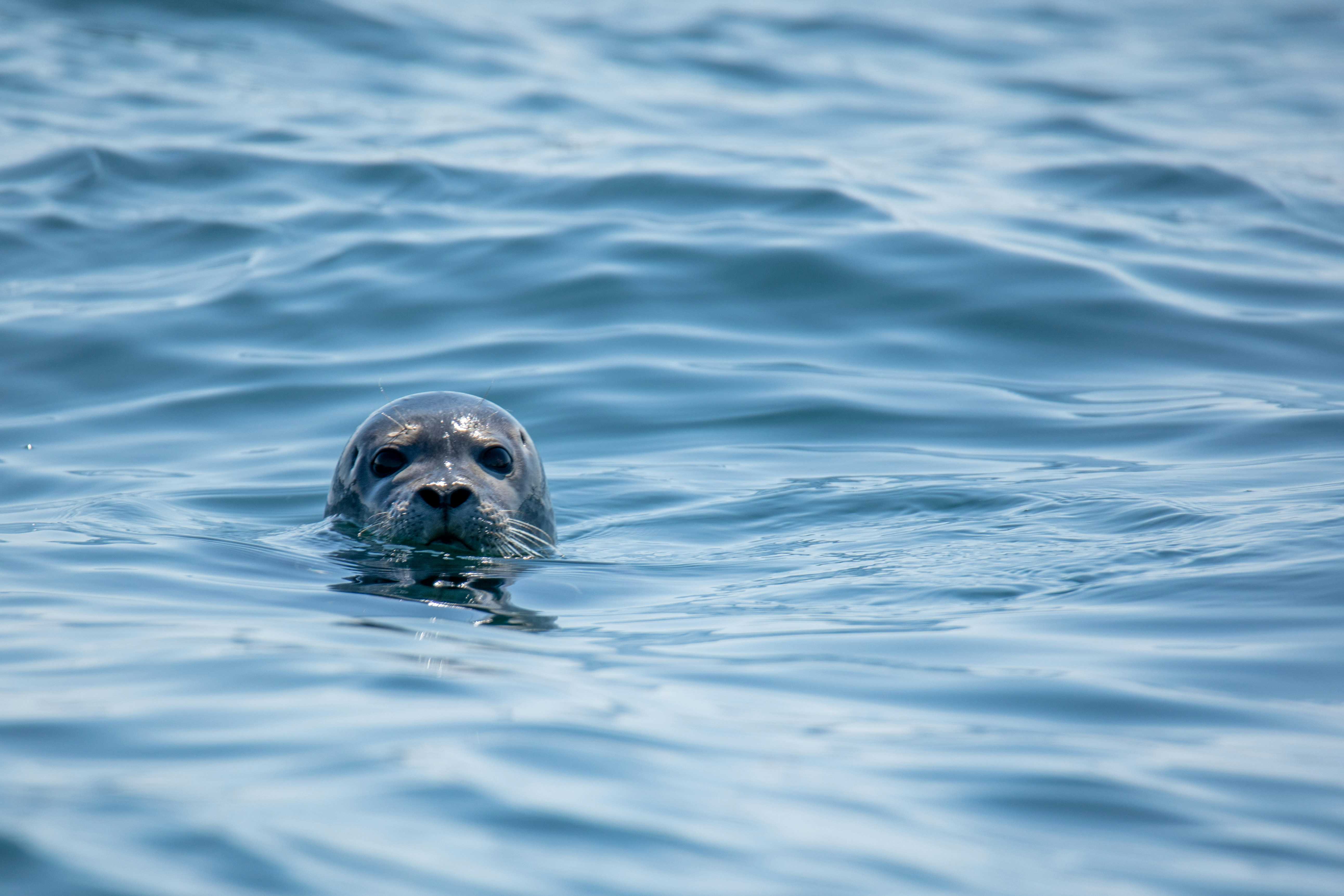8 Things To Do In St Davids, Pembrokeshire

With a population of 1751 (according to the 2021 census), St Davids is the smallest city in Wales – and indeed the whole of Britain. Named after St David, the patron saint of Wales, it was granted city status in the 16th century due to its splendid cathedral rather than any size considerations.
But bigger isn’t always better, and there are plenty of things to do in and around this pint-sized city – from golden-sand beaches and dolphin-spotting tours to historic monuments and music festivals. For those venturing to this gorgeous part of Pembrokeshire, we’ve hand-picked eight of the best things to do in St Davids.
Stunning scenery and lots of lovely fresh air means that you can easily add camping or glamping to your list of the best things to do in this area. Whether you like the simplicity of wild camping or prefer the comfort and ease of glamping, Pitchup has a place for you – check out the full range here to see what’s on offer.
Browse all campsites near St Davids
Whitesands Bay
Whitesands Beach is an easy 45-minute stroll out of town, or a short bus ride (and there are car parks for the drivers too). This golden-sand Blue Flag-certified beach is often tipped as one of Wales’ finest, and the big waves make it a particularly popular spot with surfers – locals and visitors alike.
From Whitesands, head north to reach St David’s Head, a National Trust site. This headland was formed from ancient volcanic eruptions – some of the rock here is nearly 500 million years old. This is also one of the sunniest places in Wales, and during spring and summer you’ll see butterflies and birds flitting over a sea of wildflowers. At the end of the peninsula there’s an Iron Age fort to look out for.
Ramsey Island
If you take a walk on the Wales Coast Path around St Davids, you’ll get views out towards the wildlife haven that is Ramsey Island. If gazing out at it from the mainland isn’t quite doing it for you, grab your binoculars and get closer with a boat trip. Several companies run Ramsey Island boat trips from the old St Davids Lifeboat Station in nearby St Justinian’s, and you can either simply take a ride around the island (looking out for wildlife like seals, puffins and dolphins), or make a landing (an entrance fee will apply). While on shore, you can explore the 640-acre RSPB Wildlife Sanctuary or watch marine life in one of the island’s many inlets. There’s a visitor centre on the island.
For more wildlife adventures, whale- and dolphin-watching boat trips also leave from the area around St Davids. June to September is when you’ll have the best chance of a sighting.

St Davids Cathedral
If you only visit one place in St Davids, it simply has to be the cathedral: after all, it’s the reason that St Davids is on the map. It’s also gorgeous, with its 12th-century design rendered in soft purple sandstone. Once you’re inside, look up to see the soaring 16th-century oak ceiling and then visit the treasury full of precious objects.
St Davids Cathedral was built on top of the much older St Davids Monastery, an ancient religious site where pilgrims came from all across Wales to pay homage to their country’s patron saint. At the end of May it’s also home to the St Davids Cathedral Music Festival, an annual celebration of classical music.
Cross the river to visit St Davids Bishop’s Palace, a dramatic Gothic ruin. Its imposing architecture reminds visitors of the power held by medieval bishops, and the Bishopric of St Davids in particular. During the medieval era, a Bishop of St Davids would have been one of the largest landowners in Wales and hugely powerful – hence their ability to build grand structures on a grand scale.
Pembrokeshire Woollen Mills
Wales is famously home to a lot of sheep – and it quickly follows that it’s a top producer of wool as well. A great place to find out a bit more about the production process is Solva Woollen Mill, the oldest continually working woollen mill in the county. A visit here is a bit like stepping back in time – it’s set in an old rural stone building where the team hand-craft products on a traditional mill, just as they have for more than 100 years.
The mill is only a 10-minute drive from St Davids, and it’s a real haven for craft shopping, showcasing its own beautiful blankets, cushions, rugs and other items alongside the work of other local artisans; there’s also a tearoom where you can relax while deciding which piece(s) to purchase.
Solva Woollen Mill also has a shop in Solva village centre for those who’d like to do a bit of shopping while exploring the pretty harbour village.
Pembrokeshire Coast National Park
St Davids is located in Britain’s only coastal national park – Pembrokeshire Coast National Park. So it’s no surprise that there are plenty of walking routes around the city, including circular walks taking in part of the lovely Pembrokeshire Coast Path.
One of our favourites is the stroll out to St Justinian’s, where you’ll have sweeping views across the sea to Ramsey Island – where you might spot seals or porpoises if you’re lucky – and can visit the Lifeboat Station to learn more about maritime rescue. This coast’s craggy cliffs and jagged rocks make storms treacherous, but the landscape very scenic.
St Non’s Chapel and Well
Overlooking St Non’s Bay, the crumbling St Non’s Chapel is one of the oldest Christian buildings in Wales. St David was reputedly born here around 500 AD, and it’s named after his mother, St Non. Near the chapel is a well, the waters of which are said to have healing properties.
St Non’s is still a site of pilgrimage, but even if you don’t experience any miracles here there are always some gorgeous views that are bound to lift the spirits. An easy three-mile circular walk from St Davids is a nice way to fill a couple of hours, with longer routes also available if you’d like to see more of the area’s coastal scenery.
Oriel y Parc Gallery
At the top end of town, Oriel y Parc is part visitor centre, part cultural hub – and with a nice café thrown in for good measure too. It makes a very handy first stop in St Davids, as you can pick up useful advice here on walking routes, attractions and the like before visiting the permanent exhibition for some insight into local life and history.
Alongside the permanent exhibits there’s an ever-changing programme of temporary exhibitions along with talks, workshops, markets and family activities. Take a look at what’s on to find something that interests you.
Caerfai Bay and Beach
South-facing Caerfai Bay is the closest beach to St Davids. As well as being convenient, it’s also lovely – it gets lots of sunshine, and has views across the sea to Skomer Island and Solva. Visit at low tide if you’re after sandy shores – at high tide, the beach disappears to become a little rocky cove at the foot of towering multi-coloured cliffs. Shelter from the cliffs means that it’s a good place to take a dip or go sea kayaking.
The walk to Caerfai from St Davids usually only takes about 20 minutes, but it’s worth knowing that beach access is via some pretty steep steps so you’ll need to take care if you’re bringing kids, carrying kayaks or feeling a bit unsteady on your feet.
Planning to explore this part of Pembrokeshire a bit more? Maximise your time in the county’s fabulous landscapes by booking a camping or glamping break – there are several campsites within walking distance of St Davids, along with plenty of coastal and countryside locations with good links to the city by bus, bike or car.